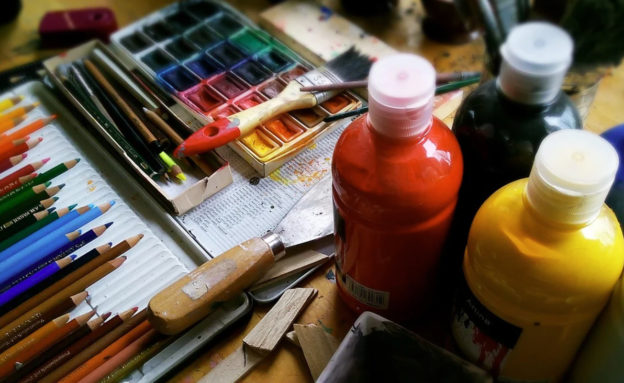Art. It brings to mind beautiful paintings and murals, sculptures and tapestries. It also brings to mind the jokes that pass for “art” these days, saying more about the anti-culture urges of our supposed betters than their abilities to wield a paintbrush. Not surprisingly, when the art of today is more “ecce mono” than “ecce homo”, many Christians consign art post-1900 to the bin.
But there is no reason to look down on art and question its usefulness to God, compared to the tithes of a STEM job or public speaking ability. God blesses many of us with artistic ability, as one means in our lives by which we can glorify God. In Exodus, God calls and equips two men to lead the construction efforts for his dwelling-place with Israel, for God’s glory. We too are called and equipped to offer the best we have, artistic or otherwise, to God.
In previous chapters of Exodus, God has described to Moses the various parts of the tabernacle that require building, the clothes the priests were to wear, and the incense they were to burn. But Moses was not left to pull out his saw and sewing needle himself, because God had laid on two men an artistic call.
The first God told Moses he had called was “Bezalel the son of Uri, son of Hur, of the tribe of Judah” whom he had called “by name” (vv.1-2). Secondly, God had “appointed with him Oholiab, the son of Ahisamach, of the tribe of Dan” (v.6).
These men were specifically chosen by God, by name, and explicitly called and appointed to the task of preparing God’s dwelling-place on earth. While God could have created all these items himself from nothing, God chose to use people and already created raw materials to fashion objects designed for his worship and glory.
Their calling was so important that they were artistically equipped to accomplish their calling. For Bezalel (and likely for Oholiab as well), this equipping was spiritually inspired as God “filled him with the Spirit of God” (v.3) to build something never before constructed in that fashion.
Together with the special gifting of the Holy Spirit for this particular task was equipping with skill. Bezalel had “ability and intelligence, with knowledge and all craftsmanship” (v.3). He was not only very able, but very bright, learned, capable of thinking through the best approach, and great at executing what he set out to do.
The equipping was not just in one specific area either, but in all kinds of art. He would need “to devise artistic designs, to work in gold, silver, and bronze, in cutting stones for setting, and in carving wood, to work in every craft” (v.4-5). Not just design, but woodwork, stonework, metalwork, and carving were artistic strengths to serve God.
The artistic call and artistic equipping were needed to make art for God’s glory. Bezalel and Oholiab would be busy; they would lead and direct the many other men God had gifted to assist them in a massive construction project (v.6).
These men would construct everything from the tent to the ark of the covenant, the lampstand, the table, the altars, the clothes, and prepare the first batches of incense (vv.7-11).
While God had laid out good plans on how things were to be constructed, Bezalel and Oholiab would still be busy designing what the Cherubim looked like, among other things. Artistic decisions would have to be made, to make sure that the result was beautiful and worthy of God.
But if it was for God’s glory, that artistic expression could only go so far. “According to all that I have commanded you, they shall do” (v.11). They could not decide to change the shape of the table, or substitute silver for gold on the ark’s lid. Nor could they slip a cheeky visual depiction of God into the tabernacle, violating the Second Commandment. Their art served God, but it was not to be their God.
This passage reminds us that art is good – it comes from God! God is the ultimate artist, who made and shaped all things. True art reflects the beauty of Creation and the creativeness he has given us for constructive benefit.
All types of art are beautiful. Even abstract art (commonly abused today in our anti-culture) is seen here in the symbolic meanings of the tabernacle furniture. The problem with art is not art, but whether that art is building up and glorifying God, or tearing down.
So for those of us with the knack, we can worship God with our artistic abilities. That may mean tapestries for the church hall or a beautifully constructed communion table. It certainly means that whatever our artistic pursuits we recognise that we do it in a way which brings glory to God, through our acknowledgement of God as the art-giver and talent-giver.
Ultimately, our art should glorify God, just like all our acts. Whatever we have, artistic or otherwise, we should give to God as thanks, glory, and worship for his wondrous deeds.


